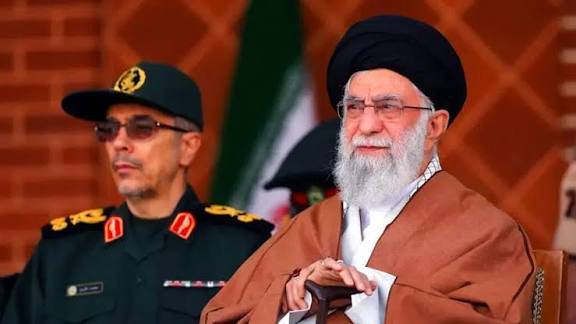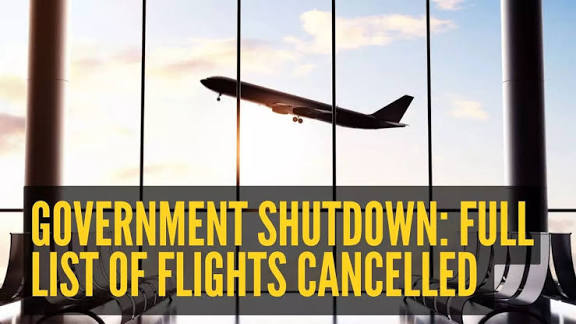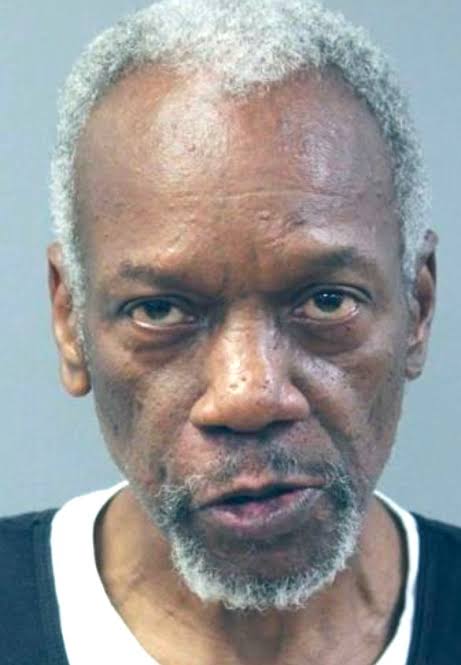Israel hezbollah news: Iran sends $1B to Hezbollah,leader killed,fight

John Hurley, Under Secretary of State for Terrorism and Financial Intelligence, says Today we will discuss about Israel hezbollah news: Iran sends $1B to Hezbollah,leader killed,fight
Israel hezbollah news: Iran sends $1B to Hezbollah,leader killed,fight
The ongoing conflict between Israel and Hezbollah is part of a larger regional struggle involving Iran’s influence, Israel’s security strategy, and Lebanon’s fragile internal stability. Hezbollah, the powerful Shiite political and militant organization based in Lebanon, has long been Iran’s most capable proxy force. For decades, Tehran has funded, trained, and armed Hezbollah as part of its broader “Axis of Resistance” against Israel and Western powers.
Israel, on the other hand, views Hezbollah as its most dangerous non-state enemy. The group’s extensive rocket and missile arsenal, advanced drones, and Iranian support make it a formidable opponent capable of threatening Israel’s northern regions.
The conflict intensified after the Gaza war, spilling over into northern Israel and southern Lebanon. The renewed violence includes Israeli airstrikes deep inside Lebanon and Hezbollah rocket barrages across the border. This escalation has been compounded by reports of Iran transferring over $1 billion in funds to Hezbollah, alongside the targeted killing of several top Hezbollah leaders — most notably Hassan Nasrallah and Hashem Safieddine.
2. Iran’s $1 Billion Funding to Hezbollah

Recent intelligence reports suggest that Iran has transferred at least $1 billion to Hezbollah in 2025 alone, defying sanctions and international financial restrictions. The funding underscores Iran’s commitment to sustaining Hezbollah as a key arm of its regional power projection.
2.1 How the Money Moves
Iran is believed to use complex networks of smuggling routes, front companies, and cash couriers to bypass international sanctions. These funds arrive in Lebanon through covert banking channels, cryptocurrency transactions, and physical shipments via Syria and Iraq.
Once inside Lebanon, Hezbollah channels the money into four key areas:
-
Weapons procurement – including drones, rockets, and precision-guided missiles.
-
Rebuilding damaged infrastructure from Israeli airstrikes in southern Lebanon.
-
Social programs and welfare networks that maintain its support base among Lebanon’s Shiite population.
-
Political operations, such as funding aligned candidates and maintaining influence within the Lebanese government.
2.2 Why Iran is Doubling Down
Iran’s strategy is rooted in deterrence. By bolstering Hezbollah, Tehran ensures it can threaten Israel from the north if Israel or its allies attack Iranian assets or nuclear facilities. The timing of the $1 billion transfer coincides with Israel’s expanded operations in Syria and increased coordination with Gulf states. For Iran, strengthening Hezbollah acts as a warning: any direct confrontation with Tehran will come at a high cost for Israel.
The money also serves to stabilize Hezbollah after heavy losses from Israeli strikes. With senior leaders killed and logistics networks disrupted, Tehran’s injection of cash aims to restore morale, maintain cohesion, and replace destroyed weaponry.
2.3 Regional Impact of the Funds
The scale of Iran’s funding reshapes the military balance on Israel’s northern border. It ensures Hezbollah can continue launching sustained rocket attacks and maintain long-range missile capacity. However, it also deepens Lebanon’s dependency on Tehran, further isolating the country from Western and Gulf economic aid.
The United States and its allies view the transfer as a violation of sanctions regimes and a sign that Iran’s influence in Lebanon remains strong despite international pressure. For Israel, the funding justifies a campaign of aggressive pre-emptive strikes against Hezbollah targets.
3. Hezbollah’s Leadership Decapitation
3.1 Death of Hassan Nasrallah
Hassan Nasrallah, the long-time Secretary-General of Hezbollah, was killed in a powerful Israeli airstrike in September 2024 in Beirut’s Dahieh suburb. His death marked one of the most significant Israeli operations in decades, eliminating the man who led Hezbollah for over 30 years.
Nasrallah transformed Hezbollah from a small resistance movement into a major regional actor with vast political, military, and social influence. Under his leadership, the group fought Israel in multiple wars, supported Bashar al-Assad in Syria, and became deeply embedded in Lebanese politics.
Nasrallah’s death sent shockwaves across the Middle East. Within Hezbollah, it caused both mourning and uncertainty. For Iran, it was a symbolic loss — the death of its most loyal and charismatic proxy commander. For Israel, it was a tactical victory but one that risked intensifying the conflict rather than ending it.
3.2 Killing of Hashem Safieddine
Just weeks after Nasrallah’s death, another senior Hezbollah official, Hashem Safieddine, was killed in an Israeli strike in early October 2024. Safieddine was widely seen as Nasrallah’s successor and a central figure in managing Hezbollah’s finances and coordination with Iran.
His death deepened Hezbollah’s leadership crisis. Israel’s intelligence agencies appeared to have penetrated deep into the group’s upper ranks, targeting command centres with precision. These decapitation strikes weakened Hezbollah’s hierarchy but also pushed the group toward decentralisation — smaller, autonomous units capable of acting without central command.
3.3 Rise of Naim Kassem
Following the back-to-back assassinations, Naim Kassem, Nasrallah’s long-time deputy, was appointed as the new leader in late October 2024. Kassem is known as a pragmatic yet deeply ideological figure. He represents continuity with Nasrallah’s vision but faces the monumental task of rebuilding the organisation’s leadership structure and maintaining cohesion amid ongoing Israeli bombardment.
Kassem’s leadership also highlights Iran’s continued influence. Tehran endorsed his appointment swiftly, signaling that Hezbollah remains firmly aligned with Iranian strategic interests.
4. The Ongoing Military Confrontation
4.1 The Battlefield
The war between Israel and Hezbollah has intensified along the Lebanon-Israel border and deep into Lebanese territory. Israeli airstrikes have targeted Hezbollah positions from southern Lebanon to the outskirts of Beirut, while Hezbollah continues launching rockets, drones, and missiles into northern Israel.
Southern Lebanese towns such as Bint Jbeil, Maroun al-Ras, and Aita al-Shaab have suffered severe damage. In northern Israel, residents of towns like Kiryat Shmona and Metula have faced repeated evacuations due to rocket attacks.
4.2 Israeli Strategy
Israel’s military doctrine is focused on deterrence through overwhelming force. By striking deep inside Lebanon and killing high-ranking commanders, Israel aims to degrade Hezbollah’s capabilities and send a clear message to Tehran.
Israeli air and intelligence units have adopted a strategy of “focused decapitation”, targeting Hezbollah’s leadership, weapons depots, and communication hubs. Drones, cyberwarfare, and electronic intelligence have played a major role.
4.3 Hezbollah’s Response
Despite its leadership losses, Hezbollah remains resilient. The group has increased the frequency of small-scale attacks, using precision drones and short-range rockets to test Israel’s defences. Its Radwan special forces continue to operate along the border, attempting limited infiltrations into Israeli territory.
Hezbollah’s strategy relies on attrition rather than victory — to keep Israel under pressure, drain its resources, and prove that Hezbollah’s capabilities remain intact despite heavy losses.
4.4 Civilian Impact
The human cost has been catastrophic. Thousands of Lebanese civilians have been displaced from southern regions, and hundreds killed. In northern Israel, ongoing bombardments have forced tens of thousands to relocate. Lebanon’s fragile economy — already suffering from collapse, inflation, and political paralysis — faces further devastation.
Hospitals are overwhelmed, infrastructure destroyed, and entire villages lie in ruins. The humanitarian crisis is deepening, with the United Nations warning that Lebanon cannot withstand another prolonged conflict.
5. Cease-Fire and Violations
Although a cease-fire was declared in late 2024, both Israel and Hezbollah continue to violate it. Israel accuses Hezbollah of re-arming and rebuilding its rocket stockpiles under Iranian supervision. Hezbollah, in turn, claims Israel is maintaining an illegal occupation and launching pre-emptive strikes.
The cease-fire functions more as a temporary pause than a sustainable peace. Cross-border skirmishes occur almost daily. Israeli aircraft frequently fly over Beirut and the Bekaa Valley, while Hezbollah continues to launch sporadic attacks on Israeli observation posts and border patrols.
6. Regional and Global Repercussions
6.1 Lebanon’s Political Turmoil
Inside Lebanon, the conflict has worsened political divisions. Many Lebanese citizens blame Hezbollah for dragging the country into another war, while others view the group as defending Lebanon’s sovereignty. The Lebanese state, already weak and bankrupt, has little control over Hezbollah’s actions.
The ongoing fighting undermines international efforts to rebuild Lebanon’s economy. Foreign investors have withdrawn, tourism has collapsed, and reconstruction aid is frozen. The longer the war drags on, the more Lebanon risks complete political and economic breakdown.
6.2 Iran’s Regional Calculus
Iran’s $1 billion investment in Hezbollah serves not just military aims but also symbolic ones. It reinforces Tehran’s narrative that it remains the guardian of the “resistance axis” — a coalition of armed groups opposed to Israel and the United States.
However, the funding also exposes Iran to greater risk. If Hezbollah suffers severe defeats, Tehran’s regional credibility could suffer. Conversely, sustained Hezbollah resistance boosts Iran’s image as a power capable of challenging Israel without direct confrontation.
6.3 Israel’s Strategic Concerns
For Israel, the northern front has become a strategic nightmare. Even with advanced missile defences like Iron Dome and David’s Sling, constant rocket attacks strain national morale and the economy. Israel’s leadership faces domestic pressure to end the threat decisively — but a full-scale invasion of Lebanon could trigger catastrophic losses.
Israel also faces diplomatic challenges. Its strikes inside Beirut, while militarily justified, have caused civilian casualties, drawing criticism from international organizations. Balancing deterrence and restraint remains one of Israel’s greatest dilemmas.
6.4 Global Power Involvement
The United States continues to support Israel militarily while urging restraint to avoid regional war. Gulf states remain cautious, wary of Iranian influence but unwilling to see Lebanon completely destroyed. Russia and China, meanwhile, call for diplomatic resolution but quietly expand ties with Tehran.
The conflict thus reflects broader global rivalries — part of a multi-layered geopolitical chessboard stretching from the Levant to the Persian Gulf.
7. What Lies Ahead
7.1 Possible Scenarios
Scenario 1: Fragile Containment
Both sides maintain limited hostilities under an uneasy cease-fire. Hezbollah quietly rebuilds with Iranian help, while Israel focuses on deterrence and intelligence. This scenario avoids full-scale war but leaves the root conflict unresolved.
Scenario 2: Escalation into Full War
A single miscalculation — such as a major rocket barrage or Israeli deep strike — could trigger all-out war. Lebanon would face immense destruction, Israel would suffer heavy civilian and economic losses, and regional powers could be drawn in.
Scenario 3: Hezbollah’s Decentralized Warfare
In response to leadership losses, Hezbollah may shift fully to decentralized guerrilla tactics — smaller, autonomous units operating independently. This would make the group harder to destroy but would prolong instability indefinitely.
Scenario 4: Lebanese Internal Collapse
Continued conflict and economic ruin could trigger state failure in Lebanon. Hezbollah might consolidate control over southern Lebanon, effectively creating a parallel state aligned with Iran.
8. Key Questions Moving Forward
-
Will Iran sustain its financial support?
The $1 billion transfer shows determination, but continued sanctions could strain Tehran’s economy. -
Can Hezbollah recover from leadership losses?
The deaths of Nasrallah and Safieddine have hurt the organisation, but its deep bench of trained commanders and Iranian backing provide resilience. -
Will Israel escalate further?
Israel’s next moves will depend on domestic politics, U.S. pressure, and the intensity of Hezbollah attacks. -
What happens to Lebanon’s sovereignty?
If Hezbollah’s power grows unchecked, the Lebanese state risks becoming a façade. -
Can diplomacy intervene?
International mediators, including the United Nations and France, are trying to broker stability — but success remains uncertain.
9. Conclusion
The Israel–Hezbollah confrontation has entered a perilous new phase defined by Iran’s billion-dollar investment, targeted assassinations of Hezbollah’s leadership, and unrelenting cross-border warfare. Each event feeds into the next: Iran’s money fuels Hezbollah’s resilience, Israel’s airstrikes provoke retaliation, and Lebanon sinks deeper into crisis.
This is no longer a localized border conflict — it is a proxy war between Iran and Israel, fought on Lebanese soil. The leadership losses have weakened Hezbollah’s central command but have not broken its will. Iran’s funding ensures the group remains a potent force, while Israel’s superior military power guarantees that the fight will continue at a high cost to both sides.
The world watches uneasily as Lebanon teeters between war and collapse. Whether the cease-fire holds or gives way to another devastating round of combat depends on decisions made in Tehran, Tel Aviv, and Beirut in the coming months.
In essence, the $1 billion war between Iran’s proxy and Israel is reshaping the Middle East once again — a reminder that in this region, every dollar, every drone, and every death reverberates far beyond the battlefield.
How useful was this post?
Click on a star to rate it!
Average rating 0 / 5. Vote count: 0
No votes so far! Be the first to rate this post.
About the Author
usa5911.com
Administrator
Hi, I’m Gurdeep Singh, a professional content writer from India with over 3 years of experience in the field. I specialize in covering U.S. politics, delivering timely and engaging content tailored specifically for an American audience. Along with my dedicated team, we track and report on all the latest political trends, news, and in-depth analysis shaping the United States today. Our goal is to provide clear, factual, and compelling content that keeps readers informed and engaged with the ever-changing political landscape.




